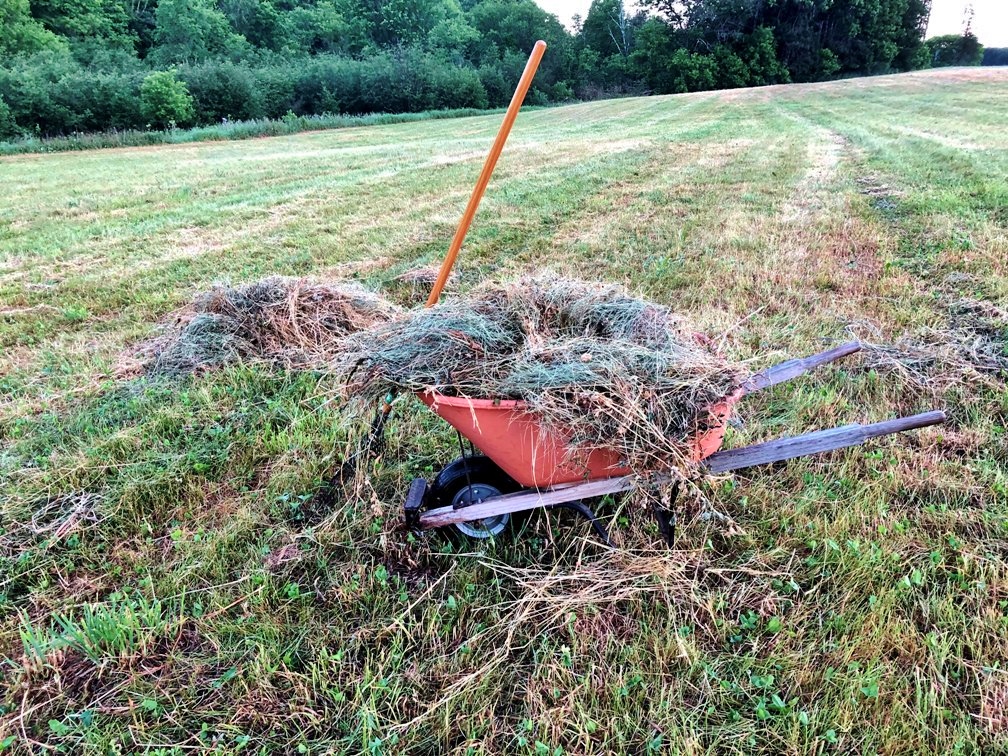Back Home by Chris Hardie
» Download this column as a Word document
» Download the photos that accompany this story
» Chris Hardie’s headshot

There are many sayings my father had when it came to farming — not all fit for publication in a family newspaper. But one I remember well was when we had a bit of a dry spell.
“It’s good for the corn,” he would say.
He would explain the dry weather would force the corn’s roots deeper into the soil to seek moisture. It would be a long-term benefit to the crop because the stronger roots would help it hold up to winds.
But when a dry spell turns into a full-fledged drought, that’s bad. It’s a situation much of the tri-state region faces now. My first cutting of hay is complete but without some rain soon, prospects of second or third cuttings are not very promising.
My small cadre of animals — a cow, bull, two donkeys and three goats — have eaten down their pasture. It’s not regrowing because of the dry weather. Soon I will need to dip into my winter hay supply, but for a few days, I went old school to keep them fed.
In the days before hay balers, farmers put up hay loose in the barns. The hay was cut, raked to dry and then loaded onto flat wagons. At the edge of one hill field on the farm are the crumbling remains of a hay loader, a piece of equipment once used to stack hay onto the wagons.
The horse-drawn wagons were backed into the upper part of the hay barn and hay forks were lowered from a pulley on the ceiling. The forks grabbed large chunks of hay. They were pulled by rope above the hay mow, where they released the hay below. The hay forks — which haven’t been used for at least 75 years — are still there.
My hay harvesting wasn’t quite as spectacular but it made me think of those old days. I used a wheelbarrow and a leaf rake to gather small sections of hay that were missed by the rake and baler. I walked across the field, raking hay into small piles. A red-winged blackbird chirped angrily and circled above my head, telling me I was too close to its nesting area.
I hauled three wheelbarrows of hay to our animals, who eagerly ate the combination of grass, clover and alfalfa.
The last major drought was in 2013, which was a year of extremes. That May we had 8 inches of rain and then after July 1 had very little. From July 1 to Sept. 1 that year, only 2.4 inches of rain were measured in La Crosse.
That was also the year hay prices soared. I had a good first and second cutting. I had visions of selling all our sheep so I could sell several thousand small hay bales at $8 or $9 each — and actually make some decent money.
We kept the sheep, of course.
I also remember the 1976 drought, when 17.47 inches of rain fell the entire year — making it the third-driest year since records have been kept. That prompted my dad to drill a high-capacity well and purchase a traveling gun irrigation system. We couldn’t reach all the fields but we had enough aluminum pipe to carry water almost a mile away.
Carrying 20-foot sections of pipe through the woods was a two-person job — we would carry two pipes at a time — and would take many hours. But the ability to bring artificial rain to the fields kept our sandy soils productive instead of burning up.
It is with fond hope that by the time this column is published we will have had ample rain to break us from the moderate-drought conditions that persist as of this writing. But we haven’t had measurable rain for more than two weeks and the next rain chance is not for several days. At least we no longer have 30 sheep to feed.
Chris Hardie spent more than 30 years as a reporter, editor



